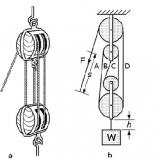Biology and Robotics – Monkey Brain Controls Robotic Arm – 11010
A monkey controls a robotic arm through computers attached to his brain
Monkey Uses Brainwaves to Control Prosthetic Arm
Scientists have trained monkeys to control a robotic arm using the power of their thoughts. The research, which involved wiring electrodes into the animals’ brains, is aimed at producing controllable prosthetic limbs for patients with stroke, spinal cord injuries or neurodegenerative conditions.
The monkeys learned to feed themselves using the robotic arm and performed subtle movements such as approaching the food with the arm so as not to knock it over. The researchers believe the animals began to regard the arm as part of their own body.
Scientists have previously taught monkeys and human subjects to control a cursor on a screen or a simple grasping hand via their brain activity, but this is the first time experimenters have demonstrated that it is possible to perform complex behavioural tasks this way.
“In our research, we’ve demonstrated a higher level of precision, skill and learning,” said Prof Andrew Schwartz at the University of Pittsburgh in Pennsylvania. “The monkey learns by first observing the movement, which activates his brain cells as if he were doing it … like sports training, where trainers have athletes first imagine that they are performing the movements they desire.”
The team, who report their research in Thursday’s issue of Nature, first trained the macaque monkeys to retrieve marshmallows — a favourite treat — by using a joystick to control the prosthetic arm. Once they had mastered this, the team inserted electrodes into the animals’ motor cortex and used brain signals there to control the arm’s movement.
Gripping hand
During the trials, the animals’ limbs were restrained in plastic tubes so that they could not reach for the food themselves. After some errors, the animals learned to perform subtle movements using the robotic arm, which has a jointed shoulder, elbow and wrist, as well as a gripping hand.
The research is a progression from a study reported in 2006 which involved the patient Matthew Nagle, a 25-year-old Massachusetts man who has been paralysed from the neck down since 2001. An implant in his brain allowed him to control a cursor on a screen and to open and close the hand on a prosthetic limb by thinking of the relevant actions.
Prof John Kalaska, an expert on the primate motor cortex at the University of Montreal in Quebec, said the latest research represented the “state of the art” in the field. “[It] could one day, in principle, help patients perform many everyday tasks such as eating, drinking from a glass or using a tool,” he wrote in a commentary on the work in Nature.
He warned that there were practical problems to overcome before controllable prosthetic limbs could be used in patients. Currently, animals do not receive any touch feedback from the object they are picking up. This will be important if patients are to use a strong enough grip to handle an object without holding it so tightly that they crush it. The durability of the implanted electrodes must also be improved, because at present they deteriorate within weeks or months.
Links
http://youtu.be/sm2d0w87wQE
http://www.guardian.co.uk/science/2008/may/28/monkey.arm



